PETER HAYES
APRIL 24, 2018
I. INTRODUCTION
In this essay, Peter Hayes describes how below the vast waters of Asia, new weapons of war and the methods of thwarting them are proliferating. Advances in submarines by the world’s great navies are being joined by an increasing number of states in the region that are building their own military presence beneath the waves. He suggests that enhanced vessel traffic underwater control schemes and increased transparency of submarine operations be introduced to reduce the risk of underwater conflict escalating into war, and even nuclear war.
Peter Hayes is Director of the Nautilus Institute and Honorary Professor at the Centre for International Security Studies at the University of Sydney.
Acknowledgment: This report was funded by MacArthur Foundation. This essay was published jointly with Global Asia in its special Spring 2018 issue on Asia’s arms race.
The views expressed in this report do not necessarily reflect the official policy or position of the Nautilus Institute. Readers should note that Nautilus seeks a diversity of views and opinions on significant topics in order to identify common ground.
Banner image: permanently stationed submarine fleets in Asia-Pacific 2015, from Global Asia.
II. NAPSNET BLUE PETER ESSAY BY PETER HAYES
OFF THE BEACH: UNDERWATER WARFARE IN THE 21ST CENTURY
APRIL 24, 2018
In I959, Stanley Kramer produced and directed the movie On The Beach starring Gregory Peck, Ava Gardner, Fred Astaire and Anthony Perkins. Set in 1964, it was filmed in part on sandy beach at Mornington near Melbourne. The plot revolves around the aftermath of a nuclear holocaust that finds the USS Sawfish, an American nuclear submarine now commanded by Australia, on a desperate mission. It sails first to San Francisco and then San Diego, seeking but failing to contact survivors (there being none). It proceeds on to Melbourne where the crew and the locals have love affairs and either commit suicide or die from radiation. Cut to credits.

Figure 1: On the Beach, 1959
In reality, submarine-based nuclear weapons, and their nemesis, anti-submarine forces, were just putting to sea when Kramer rolled his cameras. The first US nuclear submarine launched in 1956, while the first Soviet nuclear sub was sighted in 1958. By the mid-1960s, the United States and Russia had tested submarine-launched ballistic missiles (in the case of the US, a live-fire Polaris missile was fired from a submarine and exploded above Christmas Island in the mid-Pacific). By the 1980s, just one strategic nuclear submarine carried enough missiles and warheads to wipe out all of its enemy’s major cities – and each of the superpowers had scores of these platforms. During the Cold War, the US put 170 and the former Soviet Union 231 nuclear-powered subs to sea.
At the same time, the US festooned the coastal areas and straits near Soviet submarine ports and beyond with underwater hydrophone networks called sound surveillance systems (SOSUS). In the Pacific, these were laid around Japan, Korea and Taiwan, as well as Alaska and Hawaii to identify and locate Soviet and other adversary’s submarines by their unique acoustic signatures. The US navy conducted one test where it exploded charges under water in the North Pacific and measured the sound in the deep ocean near New Zealand.
American nuclear-powered attack submarines tracked Soviet ballistic missile submarines as soon as they entered international waters – and often before – and trailed them until they returned. They were backed up by hundreds of anti-submarine surface warships, sono-buoy and depth-charge armed Orion P3 aircraft, and signals and communications intelligence systems that sought to pinpoint Soviet subs whenever they surfaced in their bastions or under the North Pole so that in a nuclear war, they could be destroyed before they could strike first, let alone retaliate.
The Soviets tried to emulate the American and allied submarine and anti-submarine forces, but could only substitute brute force in numbers, size and firepower against the American qualitative edge. The US always raced ahead of the Soviets in qualitative terms, leading the Soviets to deploy their submarines close to the US mainland coast so that they could hit American targets in a few minutes instead of the half-hour that an intercontinental missile would take to get from the Siberian missile fields to Washington, DC or Honolulu.
Against this desperate tactic, even the US had no effective countermeasure. The problem it presented to strategic stability was that it brought Soviet submarines even closer to American anti-submarine forces than when they hid mid-ocean or under the umbrella of their own anti-submarine forces close to home, implying that they had to fire first in a crisis to be sure of annihilating the American leadership as a way to disable US nuclear forces and thereby limit the damage to the USSR from a perceived, pending American first strike. And for the US, it suggested that these submarines should be attacked early in a crisis, before even one Soviet missile was fired from a submarine, a step that could accelerate escalation even if Soviet intentions had actually been only to threaten nuclear attack, not to actually use nuclear weapons.
From being the most secure, lost in the deep ocean, and therefore the ultimate and unassailable second strike force that could and would retaliate, no matter what happened to the homeland, submarine nuclear forces and their antithesis became the most provocative weapons of all. These forces were no longer the ultimate guarantor of “strategic stability,” better called the balance of terror, instead they were less controllable due to distance and communications difficulties and more prone to pre-delegation of nuclear-use authority in case the home national command disappeared off the periscope, possibly literally. Their weapons were now the most rapidly deliverable even compared to missiles or forward-deployed fighter bombers in Alaska, Europe and East Asian bases in Japan, Korea and Guam.
Indeed, it is now known that a Soviet submarine nearly fired nuclear weapons at US warships at the height of the 1962 Cuban missile crisis; and as part of that confrontation, the Soviets had dispatched a nuclear missile-firing submarine to stand off Honolulu, ready to nuke it if the situation had escalated. And, off the beaches and ports, superpower submariners engaged in cat-and-mouse games, sometimes even colliding with each other. American submarines also tapped into Soviet submarine communication cables in the Sea of Okhotsk to secure fantastic quantities of communications data for the US, operating even inside Soviet territorial waters. Enormous risks were taken, which only came to light in subsequent decades as submariners recounted their experiences.
Post-Cold War submarine proliferation
When the Soviet Union collapsed, on the surface it looked like the superpower submarine competition was over. The now-Russian submarine fleet in the Pacific (and Atlantic) was moored in port. Some subs sank at the dock, reactors and all; others caught on fire. For a decade, no-one paid much attention to what was going on under the water, offshore in the Pacific.

Figure 2: A nuclear shelter for Pacific Fleet submarines, Pavlovsk, Russia from:
https://www.flickr.com/photos/globalcitizen01/sets/72157627137775824
In reality, the submarine game never stopped. Competition resumed in the early 2000s between the US and Russian strategic nuclear submarines and their respective anti-submarine forces. China, India, and Pakistan have all put nuclear missile-firing submarines to sea or begun to test them seriously. Even North Korea tested submarine-launched missiles and declared its intention to emulate the superpowers.
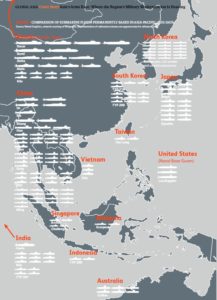
Figure 3: Submarine fleets permanently based in Asia-Pacific, 2015 from Global Asia, based on Pentagon Annual Report to Congress, US Navy and SCMP Activities
Today, the operating tempo of US nuclear-powered attack submarines in the western Pacific and their port visits to South Korea and Japan exceeds the height of the Cold War.
This activity is inexplicable in terms of the role these submarines play screening US aircraft carriers sailing in the Pacific and Indian Oceans. Today, there are fewer carrier battle groups at sea than during the Cold War. Something else is going on under sea.
That something is the emerging recognition that the future of humanity lies in the ocean, not on land. Today, seabed and ocean-sourced food, both animal and plant, are increasing rapidly in relative importance as land-based minerals and oil reserves dwindle, and as growing populations press harder and harder on degrading arable land with diminishing marginal returns. Not only the surface, but underwater oceanic space is becoming crowded as states race to grab, occupy, and exploit these resources, and to assert their claims.
This imperative is reinforced by the inexorable press of the coastal and land-locked states to exert controlled access to the high seas, and to extend national management of the ocean beyond territorial waters and Exclusive Economic Zones to (EEZs). They are seeking increased control of international straits and multilateral management of the oceanic commons against the maritime great powers, especially the US, exemplified by the US Seventh Fleet’s motto, “Ready Power for Peace” which in practice means be ready to go anywhere, anytime.
Off the Beach today
The oceans are no longer the sole domain of maritime great powers. More than 90 percent of international trade is via the oceans. Although sea lanes of communications and chokepoints are a much overstated maritime security problem (because if they were ever blocked, ships can sail right around most of these at a small cost in terms of fuel, crewing and time), submarines armed with anti-cruise missiles can now operate effectively from the submarines of even relatively small and weak coastal states, many of which – such as Australia, Indonesia, Vietnam, Singapore, South Korea, Japan and even Taiwan – are deploying their own submarines. There are now, for example, literally dozens of trans-Pacific and coastal-hopping communication cables. Tens of thousands of kilometers of cable must be laid, maintained, replaced and protected, whether against earthquakes or hostile submarines.
In short, it’s becoming crowded off the beach and under the water.
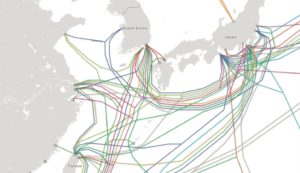
Figure 4: Submarine Cables in West Pacific
Source: https://www.submarinecablemap.com/#/submarine-cable/apollo
It is also becoming harder to hide in the ocean. During the Cold War, silence was golden at sea. A submarine at rest, located carefully in the thermal layers and mindful of the seabed topography, especially if hidden in an underwater canyon, could be confident that it was invisible – at least if it was American, and had not been tailed from the get-go.
Today, improvements in underwater hydrophone nets, in the algorithms that separate background natural and artificial noise from submarines, the ability to track thermal wakes underwater from satellites, and the promise of new sensor systems such as blue laser and wide-area quantum-gravity sensors may render large metal underwater objects completely transparent. The introduction of anti-submarine drones to track and kill submarines at low risk to their owners, artificial intelligence software to guide them and enable them to operate autonomously for days, weeks, and even months at a time, will make manned submarine forces increasingly vulnerable and less useful as threat devices or warfighting platforms.
Today, China is building an underwater Great Wall that reaches out to the first island chain that stretches from Japan to Taiwan to the Philippines to Indonesia, composed of its own sound surveillance system (SOSUS) nets and anti-submarine warfare (ASW) forces designed to deny the area above all to the US 7th Fleet, but also to other allied navies such as the Japanese Maritime Self Defense Force or the Australian navy. This includes placing acoustic sensors in the deep ocean near US bases in the western Pacific and hydrophone networks along its own coast. Its growing ability to deny uninhibited American access to surface and aircraft military forces inside this island chain has shifted competition underwater where the US remains dominant. The resulting force structure that combines US and allied underwater, surface and aerial forces amounts to a giant fish hook that is intended to bait and capture Chinese naval and submarine forces – or at least make it impossible for Chinese forces to be sure of victory in a war in the western Pacific with the US.
Figure 4: “Fish Hook” US-allied West Pacific SOSUS and ASW Barrier
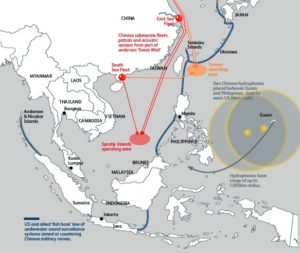
Source: Global Asia drawing from Australia National University CAP CartoGIS, Rand at: https://www.rand.org/content/dam/rand/pubs/research_reports/RR300/RR392/RAND_RR392.pdf
and South China Morning Post, at: http://www.scmp.com/news/china/diplomacy-defence/article/2126296/chinas-underwater-surveillance-network-puts-enemies and http://www.scmp.com/news/china/society/article/2130058/surveillance-under-sea-how-china-listening-near-guam
Although small submarine powers may put to sea quickly, the US, China and Russia are already developing new and potent capabilities. Russia has announced that it is developing a long-range, deep-diving nuclear armed drone-torpedo that threatens to deliver a 100 megaton cobalt H-bomb against American coastal cities – at least if President Vladimir Putin is to be believed (not everyone does).
For its part, the US is developing offensive information-deception systems such as Sea Strike that aim to defeat anti-submarine forces by using an underwater vehicle to project a submarine-sized acoustic signature and divert them into harmless attacks; an armada of underwater warships and underwater auxiliaries such as mine-sweeping drones that are already deployed in contested straits; autonomous torpedoes that can be tuned to attack particular submarines (Captor); and new surveillance systems, etc. China is designing a nuclear submarine augmented by artificial intelligence capabilities and has already tested a quantum-gravity sensing technique from a satellite that could identify stealthy masses such as bombers and submarines, rendering them buck naked.
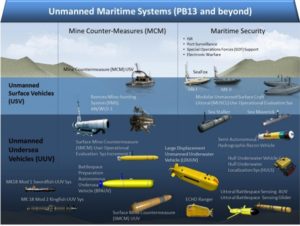
Figure 5: US Unmanned Maritime Systems in Development
SOURCE: Unmanned Systems Integrated Roadmap FY2013–38 page 8, from www.dtic.mil/dtic/tr/fulltext/u2/a592015.pdf
Having no captains or crew, underwater militarized submersibles and autonomous vehicles are not controlled by the United Nations Convention on the Law of the Sea. These systems, which are proliferating at astounding speed, are likely to be the game changer in how underwater military operations are regulated. Like anti-ship missiles, drones are relatively cheap and are already being deployed by small- and medium-sized coastal states, as well as by the maritime great powers. Left unregulated, they may render the old rules of freedom to operate under the sea anywhere, anytime, unreliable for the maritime great powers and increase the incentive to use submarine-based nuclear weapons before they are lost to offensive anti-submarine drones. At the same time, the new underwater military vehicles will strengthen the hand of coastal states that have long rejected in practice untrammeled transit rights for warships above and below the ocean surface.
Curbing underwater armament
The old arms control idea of creating oceanic no-go or ASW-free zones, leaving strategic ballistic-firing submarines free to operate without the threat of instantaneous destruction, is even less practical today than it was when it was first proposed. Not least is the problem of verification and enforcement of such zones.
Although full-fledged zones to keep ASW forces from surging into ballistic missile-firing submarine bastions may not be in the cards, less demanding measures to control the threat to strategic submarines may be important to reduce their respective owners’ inclination to strike first.
The first objective may be to simply reduce the number of such platforms carrying nuclear missiles to no more than one or two submarines per nuclear-weapons state, one in port, one at sea at any given time, on the argument that this suffices to “rip off an arm,” as the French put it in justifying their independent nuclear force under President Charles de Gaulle. Doing so would enable a nuclear-weapons state to deploy the force in a closely guarded formation at sea; or to simply keep both in port (as the Russians and possibly the Chinese have done for many years) from where they can still fire their missiles.
Similarly, ensuring that submarine-launched missiles carry only one warhead in a verifiable manner may increase confidence that the submarines will not be used for a first-strike at the outset of a crisis.
However, such an arms control system, even if it were multilateral and included China, India, and Pakistan, will be increasingly unable to provide stability for the simple reason that these states have more than one potential nuclear adversary. In a three-, let alone a four- or five-sided nuclear threat system, it is not obvious what “stability” even means.
Underwater vessel-traffic control?
In addition to controlling the military use of new under-water technologies with new norms and rules, another approach seems promising. This is to create vessel-traffic control schemes for approaches to the ocean from coastal states, and for the international straits where the underwater traffic is most at risk.
Submarines have traditionally been allowed to transit international straits submerged but not territorial waters. The first step would allow this to continue, but all underwater transiting vessels, including auxiliary or controlled drones, would notify the vessel traffic-control center of their approach before transiting the straits. If detected, non-declared passage underwater would be presumed potentially hostile by coastal states participating in vessel-traffic control schemes. At minimum, the vessel-traffic controllers could announce the presence and track it with drones to exit, reducing the military advantages of using the straits in the first place.
Second is to establish data-fusion centers supporting the vessel-traffic control schemes. These centers would compile streams of sensor data on underwater activities, including vessels, provided by navies, shipping companies, miners, aquaculture and fisheries operators. Precedent already exists for surface vessel and piracy control in many straits such as current shared radar monitoring in the Malacca Straits.
In the last century, the maritime great powers assumed that they could continue to operate their navies without regard to the peace and security of coastal states that have to deal with piracy, collisions, pollution, search and rescue, and other issues on a day-to-day basis. That is no longer the case.
Nuclear-armed and nuclear-powered submarines are a uniquely threatening military force that also present a unique risk from accident and collision, especially in the congested and shallow sea lanes often found in international straits or the approaches to major port cities. This concern was epitomized by the Russian nuclear submarine that was disabled after a fire in its reactor room in 1980. It transited between the Okinawa Islands with military escort vessels, even though Japan had refused its request for permission to transit due to the risk of radiation.
In another case, in 2004, a Chinese nuclear submarine that entered Japanese territorial waters lost its bearings and was chased out by the Self Defense Force (China’s foreign ministry expressed “regret” afterwards). Such incidents are certain to recur, and with higher frequency than in the past; and underwater incidents are also likely to occur involving submerged warships. In some cases, it may be difficult for states to figure out whose submarines are involved, especially in high-risk areas such as the seas east and west of North Korea, or in the straits between Korea and Japan.
Admittedly, the level of collaboration needed to implement such vessel-traffic control schemes is hard to envision today. Some states in the South China Sea, principally but not only China, have used their maritime forces to construct and arm artificial islands in old-style territorial expansion. Other maritime great powers, led by the US, are pushing back with Freedom of Navigation Operations to assert what they hold to be customary freedom of navigation in such areas.
Ironically, in a few decades, sea-level rise combined with the increased intensity and frequency of tropical storms may wash away such contested sites.
By then, submarines may be sailing to Australia to escape climate change and other threats arising from global change. Maybe some young director will be ready to roll the cameras for a remake of On the Beach, this time without radiation – if the beach hasn’t washed away by then.
III. NAUTILUS INVITES YOUR RESPONSE
The Nautilus Asia Peace and Security Network invites your responses to this report. Please send responses to: nautilus@nautilus.org. Responses will be considered for redistribution to the network only if they include the author’s name, affiliation, and explicit consent.


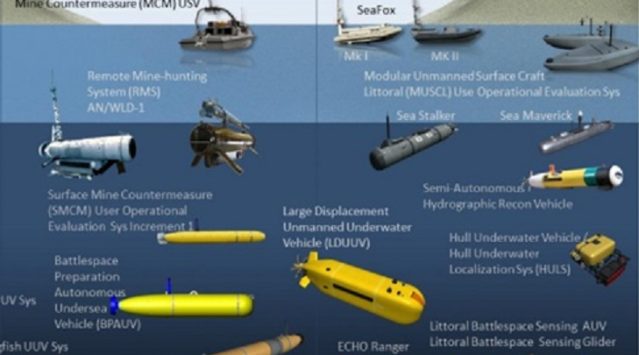
It’s a wonderful post I must say. I am amazed to see the amount of technological advancements that has taken place due to the race. And this post underlines it perfectly for a common man like me.
I am also into the technology sector but into a wholly different spectrum of it. Thank you for the post.